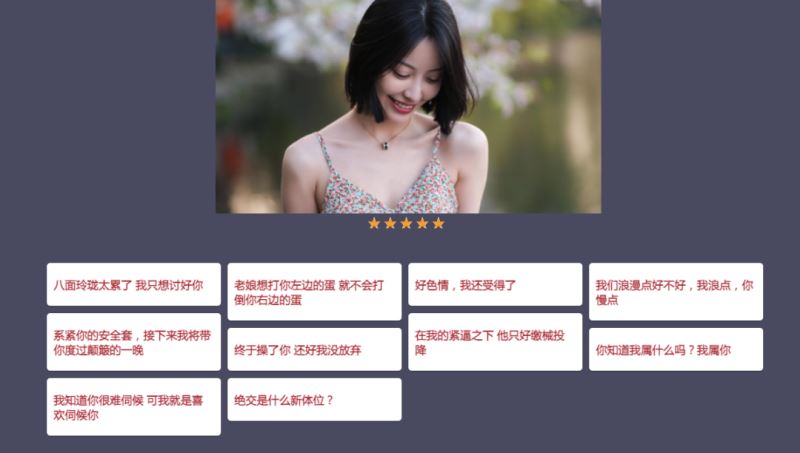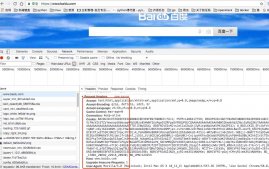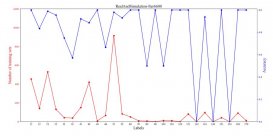先来看一下效果吧,只要有足够的照片素材,捕获女神的心就指日可待


怎么样,看起来还可以吧
下面就一起来完成吧
数据准备
首先是测试图片的获取,毕竟萝卜哥当前还没有那么多女神的照片
这里我使用如下网站的高清图片,嗯,各个都是大美女

抓取的代码比较简单
import requests
import json
def get_pic():
headers = {"Accept": "application/json, text/javascript, */*; q=0.01",
"User-Agent": "Mozilla/5.0 (Macintosh; Intel Mac OS X 11_0_1) AppleWebKit/537.36 (KHTML, like Gecko) Chrome/89.0.4389.114 Safari/537.36",
"Cookie": "Hm_lvt_6e8dac14399b608f633394093523542e=1607173561; Hm_lvt_ea4269d8a00e95fdb9ee61e3041a8f98=1621344383; Hm_lpvt_ea4269d8a00e95fdb9ee61e3041a8f98=1621344423",
"Referer": "http://lab.mkblog.cn/wallpaper/"}
pic_url = "http://lab.mkblog.cn/wallpaper/api.php?cid=6&start=0&count=100"
pic_res = requests.get(pic_url, headers=headers)
pic_res_json = pic_res.json()
pic_info = pic_res_json.get("data")
pic_url = []
num = 0
try:
for i in pic_info:
if num % 5 == 0:
pic_url.append(i["url"])
if num % 5 == 1:
pic_url.append(i["img_1600_900"])
if num % 5 == 2:
pic_url.append(i["img_1366_768"])
if num % 5 == 3:
pic_url.append(i["img_1280_800"])
if num % 5 == 4:
pic_url.append(i["img_1024_768"])
num += 1
except:
pass
return pic_url
def save_pic_url(data):
json.dump(data, open("pic_url.json", 'w'))
if __name__ == '__main__':
pic_url = get_pic()
save_pic_url(pic_url)
因为网站提供了不同分辨率的图片,所以也就根据一定的规则来获取不同分辨率的图片了。
接下来是获取渣男话术,哈哈哈哈,又是一个有趣的网站,感兴趣的朋友自行查看吧
由于这个接口是有调用频率限制的,那么也抓取一些到本地吧
def get_data():
headers = {"Accept": "application/xml",
"User-Agent": "Mozilla/5.0 (Macintosh; Intel Mac OS X 11_0_1) AppleWebKit/537.36 (KHTML, like Gecko) Chrome/89.0.4389.114 Safari/537.36"}
url = "https://nihaowua.90so.net/api/wus"
res = requests.get(url, headers=headers).json()
return res
if __name__ == '__main__':
data_list = []
for i in range(10):
data = get_data()
data_list.append(data.get("title"))
time.sleep(10)
json.dump(data_list, open("data.json", "w"))
网站搭建
首先我们还是通过简单的 Flask 来进行后台的搭建
index 视图
@app.route('/', methods=['GET', 'POST'])
def index():
pic_list = json.load(open("pic_url.json"))
seg = int(len(pic_list)/4)
data = []
socre = 5
for n in pic_list[:seg]:
tmp_data = []
pic_url = random.choice(pic_list)
tmp_data.append(pic_url)
tmp_data.append(pic_list.index(n))
data.append(tmp_data)
return render_template('index.html', data=data, score=socre)
还是比较简单的,拿到图片地址文件中的数据后,根据规则展示一部分图片
下面是 index.html 的部分核心代码
图片展示代码
{% for p in data %}
<article class="white-panel">
<img class="thumb" data-original="{{ p[0] }}">
<h1><a href="{{ url_for('nvshen', id=p[1]) }}" rel="external nofollow" title="去投票" target="_blank">爱你</a>
</h1>
</article>
{% endfor %}
懒加载图片的 js 代码
function getData(page) {
var xhr = new XMLHttpRequest();
xhr.responseType = "json";
xhr.open('POST', '/api/getdata/' + page, true);
xhr.setRequestHeader("Content-Type", "application/x-www-form-urlencoded");
xhr.onload = function (ev) {
if(this.status === 200) {
if(this.response['end'] === true) {
flag = false;
}
var mydata = this.response['msg'];
//console.log(mydata[1][2]);
for(var i=0, len=mydata.length; i<len; i++){
var myurl = mydata[i][0];
var htmlText = '<article class="white-panel">' +
'<img data-original=' + myurl +' class="thumb">' +
'<h1>' +
'<a href=URL title="去投票" target="_blank">'.replace("URL", Flask.url_for("nvshen", {id: "1"})) +
"爱你" + '</a>' +
'</h1>' +
'<p>' +
'<div id="starBg" class="stars-bg">' +
'{% if score == 1 %}' +
'<a href="#" rel="external nofollow" rel="external nofollow" rel="external nofollow" rel="external nofollow" rel="external nofollow" rel="external nofollow" rel="external nofollow" class="star-active" style="width: 20%"></a>' +
'{% elif score == 2 %}' +
'<a href="#" rel="external nofollow" rel="external nofollow" rel="external nofollow" rel="external nofollow" rel="external nofollow" rel="external nofollow" rel="external nofollow" class="star-active" style="width: 40%"></a>' +
'{% elif score == 3 %}' +
'<a href="#" rel="external nofollow" rel="external nofollow" rel="external nofollow" rel="external nofollow" rel="external nofollow" rel="external nofollow" rel="external nofollow" class="star-active" style="width: 60%"></a>' +
'{% elif score == 4 %}' +
'<a href="#" rel="external nofollow" rel="external nofollow" rel="external nofollow" rel="external nofollow" rel="external nofollow" rel="external nofollow" rel="external nofollow" class="star-active" style="width: 80%"></a>' +
'{% elif score == 5 %}' +
'<a href="#" rel="external nofollow" rel="external nofollow" rel="external nofollow" rel="external nofollow" rel="external nofollow" rel="external nofollow" rel="external nofollow" class="star-active" style="width: 100%"></a>' +
'{% else %}' +
'<a href="#" rel="external nofollow" rel="external nofollow" rel="external nofollow" rel="external nofollow" rel="external nofollow" rel="external nofollow" rel="external nofollow" class="star-active" style="width: 0%"></a>' +
'{% endif %}' +
'</div>' +
'</p>' +
'</article>';
var script = '<script>' +
'$(function(){' +
'$("img.thumb").lazyload();' +
'})' +
'<\/script>';
$('#gallery-wrapper').append(htmlText);
$('body').append(script);
}
}else if(this.status === 422) {
console.log("get data error");
}
};
xhr.send();
}
这里用到了 接口 getdata,我们来看看其实现
@app.route('/api/getdata/<int:page>', methods=['POST'])
def get_data(page):
pic_list = json.load(open("pic_url.json"))
seg = 0
seg_page = int(len(pic_list)/4)
end = False
if page == 2:
seg = seg_page
seg_page = seg*2
elif page == 3:
seg = seg_page*2
seg_page = seg + seg_page
elif page == 4:
seg = seg_page*3
seg_page = int(len(pic_list)) + 1
end = True
elif page == 1:
pass
else:
return jsonify({"msg": "error page id", "code": 422}), 422
data = []
socre = 1
for n in pic_list[seg:seg_page]:
tmp_data = []
pic_url = random.choice(pic_list)
tmp_data.append(pic_url)
data.append(tmp_data)
return jsonify({"msg": data, "code": 200, "end": end}), 200
这里有一个分页的机制,用于懒加载图片
接下来就是详情页,也就是展示“渣男语录”的页面
@app.route('/nvshen/<id>/', methods=['GET', 'POST'])
def nvshen(id):
pic_list = json.load(open("pic_url.json"))
pic_url = pic_list[int(id)]
data = json.load(open("data.json"))
return render_template('nvshen.html', nvshenid=id, main_url=pic_url, data_list=data, user_score=5)
分别拿到当前图片的地址和抓取好的渣男语录,返回给前端
对于 nvshen.html 代码也比较简单,直接来个循环即可
<section id="gallery-wrapper">
{% for d in data_list %}
<article class="white-panel">
<!--<img data-original="{{ d }}" class="thumb">-->
<h1><a href="#" rel="external nofollow" rel="external nofollow" rel="external nofollow" rel="external nofollow" rel="external nofollow" rel="external nofollow" rel="external nofollow" >{{ d }}</a>
</h1>
</article>
{% endfor %}
</section>
这样,我们一个简单的女神网站就完成了
服务部署
Python web 的部署,我一般使用 gunicorn
gunicorn 基本配置
# coding=utf-8
import sys
import os
import multiprocessing
path_of_current_file = os.path.abspath(__file__)
path_of_current_dir = os.path.split(path_of_current_file)[0]
_file_name = os.path.basename(__file__)
sys.path.insert(0, path_of_current_dir)
worker_class = 'sync'
workers = multiprocessing.cpu_count() * 2 + 1
chdir = path_of_current_dir
worker_connections = 1000
timeout = 30
max_requests = 2000
graceful_timeout = 30
loglevel = 'info'
reload = True
debug = False
access_log_format = '%(h)s %(l)s %(u)s %(t)s "%(r)s" %(s)s %(b)s "%(f)s" "%(a)s" "%({X-Real-IP}i)s"'
bind = "%s:%s" % ("127.0.0.1", 5001)
pidfile = '%s/logs/%s.pid' % (path_of_current_dir, _file_name)
errorlog = '%s/logs/%s_error.log' % (path_of_current_dir, _file_name)
accesslog = '%s/logs/%s_access.log' % (path_of_current_dir, _file_name)
然后再用如下命令就可以启动了
/root/miniconda3/bin/gunicorn -D -c /home/nvshen/app/gunicorn app:app
好了,这样就可以把网站地址告诉女神了,坐等被夸!
到此这篇关于利用Python为女神制作一个专属网站的文章就介绍到这了,更多相关Python制作网站内容请搜索服务器之家以前的文章或继续浏览下面的相关文章希望大家以后多多支持服务器之家!
原文链接:https://mp.weixin.qq.com/s/HUzP2SXHfzkeYeAQd5ZJsg












